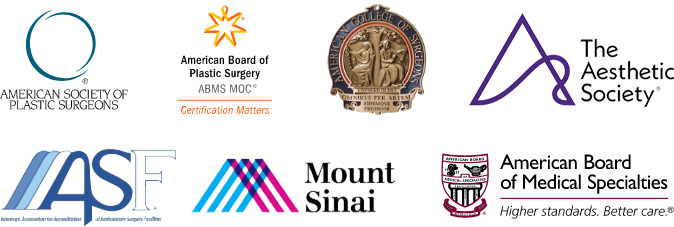As a board-certified plastic surgeon based in New York, NY, I take pride in delivering exceptional results in facial rejuvenation. With years of experience and a personalized approach to care, I have helped countless patients achieve their aesthetic goals. If you’re considering a lower facelift to restore youthful contours to your jawline and neck, this guide provides everything you need to know.
What Is a Lower Facelift?
A lower facelift is a surgical procedure that addresses signs of aging in the lower portion of the face, particularly the jawline and neck. By lifting and tightening sagging skin, reducing jowls, and smoothing the neck area, the procedure creates a refreshed and natural appearance.
“I believe that a lower facelift is about restoring confidence by enhancing the jawline and neck while maintaining a natural look.” – Dr. Thomas P. Sterry
Benefits of a Lower Facelift
Opting for a lower facelift can offer several significant advantages:
- Enhanced Jawline Definition: Tightens sagging skin to create a sharper, more youthful contour.
- Improved Neck Appearance: Eliminates excess skin and reduces wrinkles in the neck area.
- Natural-Looking, Long-Lasting Results: With advanced techniques, results can last for years.
- Boosted Confidence: Many patients report feeling rejuvenated and more self-assured after surgery.
- Minimal Scarring: Modern approaches ensure that scars are discreet and well hidden.
Do’s and Don’ts Before and After Lower Facelift Surgery
To support a smooth recovery and the best possible results, it’s important to follow these key do’s and don’ts before and after your lower facelift surgery.
Presurgery Do’s
- Follow my instructions for preparing your skin and body.
- Stay hydrated and maintain a healthy diet to promote healing.
- Arrange for transportation and support on the day of surgery.
- Avoid alcohol and smoking at least 2 weeks before the procedure.
Presurgery Don’ts
- Don’t take aspirin or other blood-thinning medications unless I approve.
- Don’t engage in strenuous physical activities that may increase blood pressure.
Postsurgery Do’s
- Keep your head elevated to reduce swelling.
- Use prescribed medications and follow the aftercare plan closely.
- Attend all follow-up appointments with me.
- Maintain a gentle skincare routine during recovery.
Postsurgery Don’ts
- Don’t expose your incisions to direct sunlight, and always wear sunscreen when outdoors (after incisions have healed).
- Don’t engage in strenuous activities until I clear you.
- Don’t use makeup or skincare products on incisions until advised.
Local Trends and Practices in Lower Facelift Surgery
In New York City, the demand for lower facelifts has grown significantly among individuals seeking subtle, natural-looking enhancements. Patients in this region often prioritize minimal downtime and discreet procedures. My expertise in advanced techniques aligns perfectly with these preferences, offering results that cater to the diverse needs of my clientele.
Ideal Candidates for a Lower Facelift
A lower facelift is an excellent option for individuals who:
- Have noticeable sagging in the lower face and neck.
- Experience jowls or a “turkey neck” appearance.
- Are in good overall health and have realistic expectations about results.
Tailored Advice for Different Patient Demographics
Younger Candidates (20s-40s)
- Focus on early signs of aging, such as mild sagging or jowls.
- Consider less invasive options, like a mini facelift or complementary nonsurgical treatments.
Older Candidates (50s-70s)
- Address more pronounced sagging and loss of elasticity.
- Benefit from comprehensive procedures, such as the deep plane facelift, for long-lasting results.
What To Expect During the Procedure
Consultation: The journey begins with a thorough consultation where I assess your concerns and discuss your goals.
Surgery: On the day of the procedure, I perform the surgery under anesthesia in a state-of-the-art facility. Incisions are carefully placed to minimize visible scarring.
Recovery: Most patients experience mild swelling and bruising, which typically subsides within a few weeks. I provide detailed aftercare instructions to ensure a smooth recovery.
Techniques I Use for Lower Facelifts
I use advanced surgical techniques tailored to each patient’s unique anatomy and goals. These include:
- Deep Plane Facelift: Focuses on the deeper facial structures, lifting underlying facial muscles and tissues for a more natural-looking and durable result.
- Mini Facelift: Offers a less invasive option for those with mild to moderate signs of aging.
Each surgery is designed to suit the individual’s facial structure and aesthetic preferences. My meticulous attention to detail ensures that my patients achieve results that are both natural-looking and transformative.
You can feel confident in my expertise as I carefully select the most suitable technique based on your individual needs.
Why Choose Me for Your Lower Facelift?
My extensive experience, combined with my personalized approach to patient care, makes me a top choice for individuals seeking a lower facelift in New York, NY. My commitment to achieving natural, beautiful results has earned me a reputation for excellence.
Lower Facelift Cost & Financing Options
The cost of a lower facelift varies based on the complexity of the procedure and your individual needs. My office provides transparent pricing and offers flexible financing options to make the procedure accessible.
Next Steps
If you’re considering a lower facelift, take the first step by scheduling a consultation with me or call my office at (212) 249-4020. During your visit, I will discuss your goals, answer your questions, and create a customized treatment plan tailored to your needs. With my expertise and dedication, you can feel confident in achieving the results you desire.
Lower Facelift FAQ
What specific concerns can a lower facelift address?
A lower facelift focuses on issues like sagging skin, jowls, and neck aging. It enhances the jawline and smoothens the neck area for a rejuvenated appearance.
How long do the results of a lower facelift typically last?
Results can last 7 to 10 years or longer, depending on factors such as skin quality, age, and lifestyle habits.
What is the recovery process like after a lower facelift?
Most patients experience swelling and bruising for 1 to 2 weeks. Full recovery may take several weeks, during which I provide detailed aftercare instructions.
Are there any nonsurgical alternatives to a lower facelift?
How is a deep plane facelift different from other techniques?
The deep plane facelift addresses deeper facial structures, providing more natural-looking and longer-lasting results compared to traditional techniques.
Will there be visible scarring after a lower facelift?
Scars are minimal and strategically placed to be nearly invisible. They typically fade well over time with proper care.
How do I know if I’m a good candidate for this procedure?
Ideal candidates have noticeable signs of aging in the lower face and neck, are in good health, and have realistic expectations about results.
Medical References
- Modified Deep-Plane Face Lift and Lower Midface Lifting – Plastic and Reconstructive Surgery https://journals.lww.com/plasreconsurg/abstract/2024/06000/modified_deep_plane_face_lift_and_lower_midface.14.aspx
- Creating Lift in the Lower Face With Botulinum Toxin A Treatment – Aesthetic Surgery Journal Open Forum https://academic.oup.com/asjopenforum/article/doi/10.1093/asjof/ojac034/6576653?login=false
- Facelifts: A Contemporary Perspective – PMC https://pmc.ncbi.nlm.nih.gov/articles/PMC6188335/
- Bell Palsy – StatPearls – NCBI Bookshelf https://www.ncbi.nlm.nih.gov/books/NBK482290/
- The Role of Botulinum Toxin in Facial Rejuvenation – Journal of Clinical and Aesthetic Dermatology https://www.ncbi.nlm.nih.gov/pmc/articles/PMC6188335/





Leave a Reply